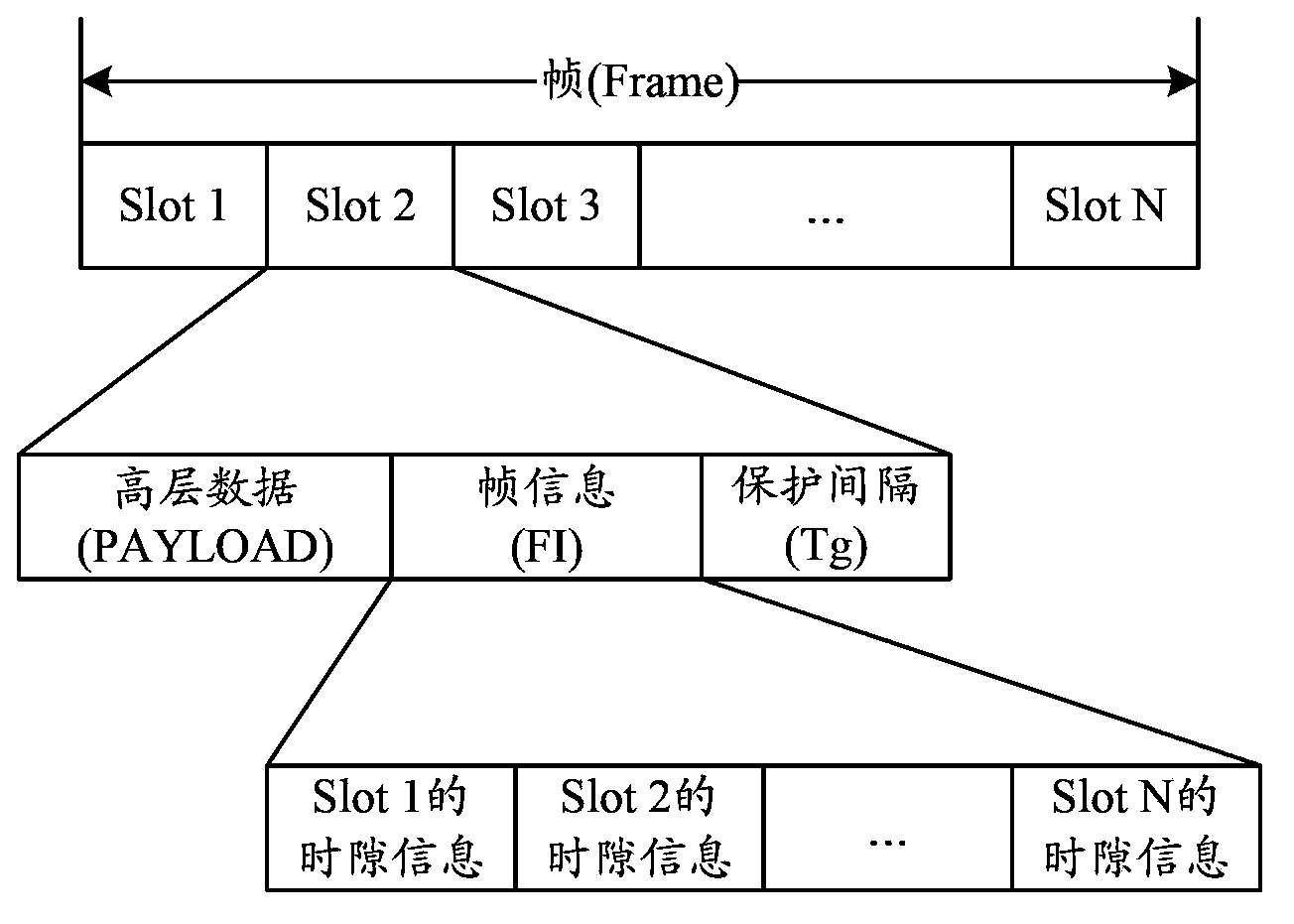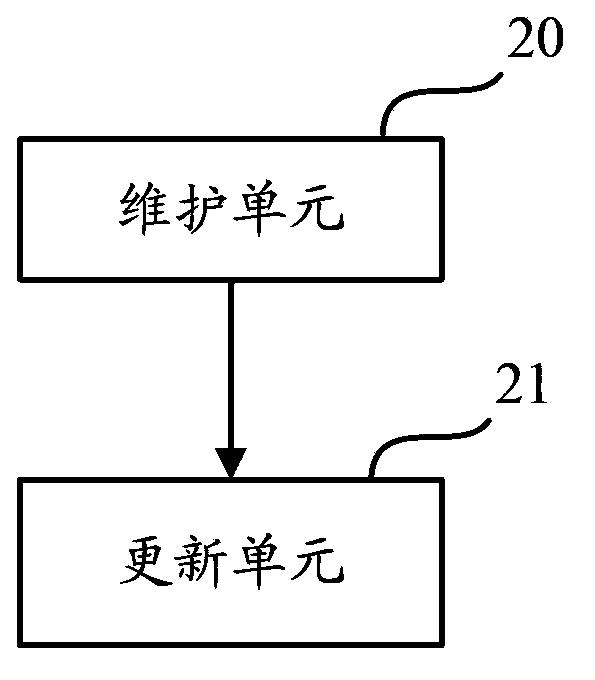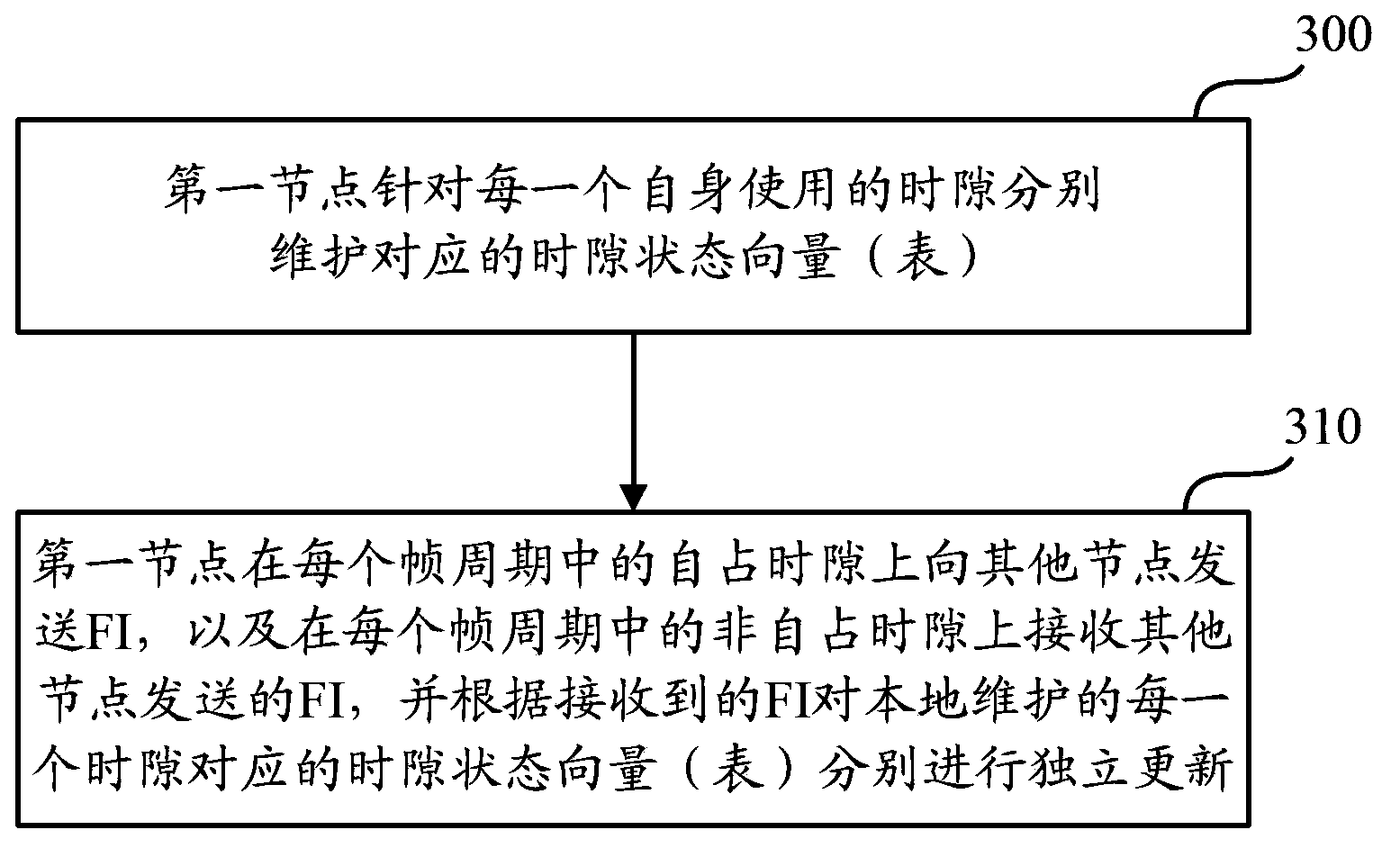Timeslot status maintenance method and device
A technology of time slot and state, applied in the field of network management, can solve the problem of inability to process information, and achieve the effect of efficient transmission service
- Summary
- Abstract
- Description
- Claims
- Application Information
AI Technical Summary
Problems solved by technology
Method used
Image
Examples
Embodiment 1
[0054] refer to Figure 4 As shown, when the time slots used by node A include a self-occupied time slot, time slot 1, and the time slot used by node B itself is self-occupied time slot, time slot 2, the process of applying for a new time slot 5 is as follows:
[0055] Step 400: Node A maintains a corresponding slot state vector (table) for self-occupied slot 1.
[0056] The slot state vector (table) corresponding to the self-occupied slot 1 of node A is shown in Table 1. Among them, the self-occupied time slots and application time slots corresponding to each table are recorded as the associated time slots of this table, for example, in Table 1, the current self-occupied time slot of node A, time slot 1, is the associated time slot of node A .
[0057] Table 1
[0058] slot number
[0059] Step 410: Duplicate the time slot state vector (table) corresponding to self-occupied time slot 1 of node A, and generate the initial time slot state vector (table) correspondi...
Embodiment 2
[0067] refer to Figure 5As shown, when the self-occupied time slots of node A are time slot 1 and time slot 5, the self-occupied time slots of node B are time slot 2, and the time slot state information corresponding to time slot 3 and time slot 4 is idle, Node A independently updates the slot state vector (table) corresponding to self-occupied time slot 1 and the time slot state vector (table) corresponding to self-occupied time slot 5 according to the received FI sent by node B The process is:
[0068] Step 500: Node A receives the FI sent by Node B on a time slot not used by itself in the aforementioned frame period.
[0069] In the embodiment of the present invention, it is assumed that the FI sent by the Node B on the self-occupied time slot Slot 2 is as shown in Table 3.
[0070] table 3
[0071] slot number
1
2
3
4
5
slot occupancy status
10
10
00
00
10
Occupying the node's STI
ST...
Embodiment 3
[0086] refer to Figure 6 As shown, the self-occupied time slot of node A is time slot 1, and the self-occupied time slot of node B is time slot 2, and the time slot status information of other time slots in this frame cycle is idle, when node A intends to When slot 5 is used as the application time slot, node C uses time slot 5 as the self-occupied time slot. At this time, the processing process of node A for each time slot used by itself is as follows;
[0087] Step 600: Node A maintains a slot state vector (table) corresponding to self-occupied slot 1, and node A maintains a slot state vector (table) corresponding to application slot 5.
[0088] The time slot state vector (table) corresponding to node A's self-occupied time slot slot 1 is shown in Table 1, and the time slot state vector (table) corresponding to node A's application time slot is shown in Table 2.
[0089] Step 610: Node A receives the FI sent by Node B, and updates the time slot state vector (table) corresp...
PUM
 Login to View More
Login to View More Abstract
Description
Claims
Application Information
 Login to View More
Login to View More - R&D
- Intellectual Property
- Life Sciences
- Materials
- Tech Scout
- Unparalleled Data Quality
- Higher Quality Content
- 60% Fewer Hallucinations
Browse by: Latest US Patents, China's latest patents, Technical Efficacy Thesaurus, Application Domain, Technology Topic, Popular Technical Reports.
© 2025 PatSnap. All rights reserved.Legal|Privacy policy|Modern Slavery Act Transparency Statement|Sitemap|About US| Contact US: help@patsnap.com



